Find a book

A Book a Month
We can send a book a month for six or twelve months - the perfect gift. More »

Café Music
Listen to our album of Café Music while browsing the site. More »

A parallel in pictures to the world of Persephone Books.
To subscribe, enter your email address below and click 'Subscribe'.
28 January 2016
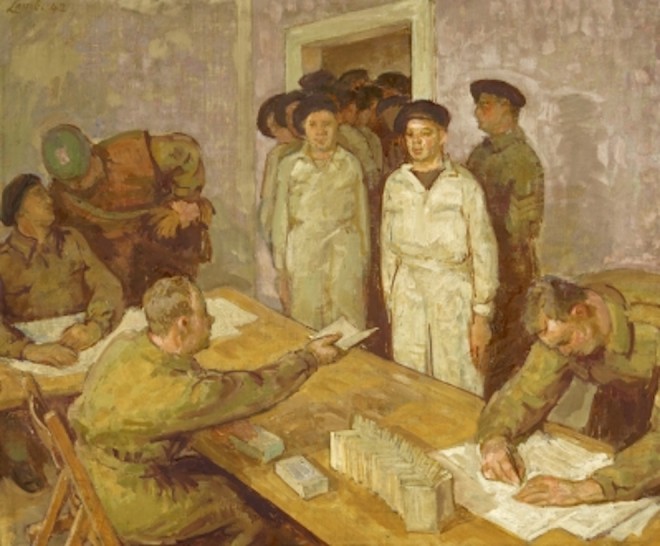
Pay at the Canadian Armoured Division by Henry Lamb was painted in 1942. It was apparently a gift to Bristol from the Imperial War Museum in 1947. The Bristol site says : ‘Henry Lamb was appointed a full-time war artist by the War Artist Advisory Committee. He was placed with the Twelfth Canadian Army Tank Battalion who were training in England. Lamb painted highly individualistic portraits of soldiers of all ranks, men and women. He portrayed the soldiers training, at work and the rare occasions of rest.’
27 January 2016
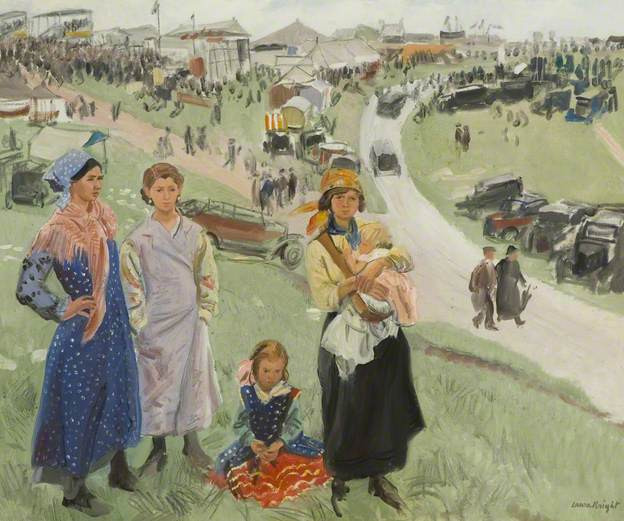
Laura Knight’s Epsom Downs 1938 is at Bristol. ‘Laura Knight is well known for her paintings of fairground and circus life, ballet and the theatre. In the late 1930s she found new subjects at the races, including the gypsies who told fortunes there. Her easel was set up in the back of a borrowed Rolls Royce and she painted vigorously and rapidly from life, here using the pastel colours typical of the 1930s’ (from the PCF site).
26 January 2016
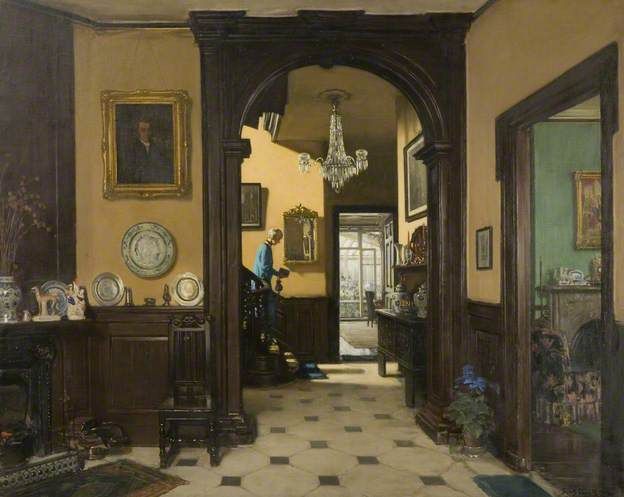
We were stunned and delighted to discover a Fred Elwell in Bristol. My Neighbour’s House was painted in 1929 and ‘acquired’, with great foresight, a year later. This is what it says on the always excellent BBC/PCF site: ‘The succession of rooms and the various light sources make a complex composition, meticulously painted, and the viewer’s eye is drawn through the house to where sunlight pours into the lounge. The artist’s choice of frame, which imitates seventeenth-century Dutch frames, suggests he was paying homage to Dutch masters of the interior, such as Pieter de Hooch and Johannes Vermeer.’ Indeed.
25 January 2016

It is always fun going to Bristol (a city where there are Persephone readers in their hundreds, almost thousands) and last weekend we explored the Bristol Museum and Art Gallery, a wonderfully unwrecked building which bore a great, and good, resemblance to another favourite, the Kelvingrove in Glasgow. Until April there is a small exhibition called Figure and Form which shows ‘a range of artists working in Britain in the early twentieth century who explore the human body in the diverse styles of that era’: an excuse to show Ravilious’s Tennis Players (owned by Bristol Art Gallery) which is unusual as Ravilious rarely drew figures. These three paintings were originally door panels for the music room in Sir Geoffrey Fry’s Portman Court flat
22 January 2016
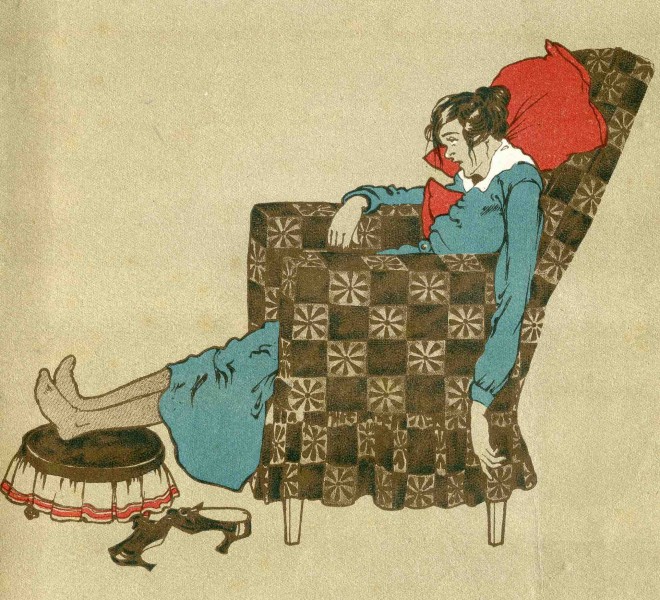
The verse accompanying the final Joyce Dennys drawing reads: ‘When you come to the end of a Perfect Day/ And you sit alone with your thought,/ When you feel that your hair is turning grey/ With the joys that the day has brought,/ Do you think what the end of a Perfect Day/ Can mean to weary feet/ In a thousand Huts YMCA/ With never a chance of a seat!’
21 January 2016
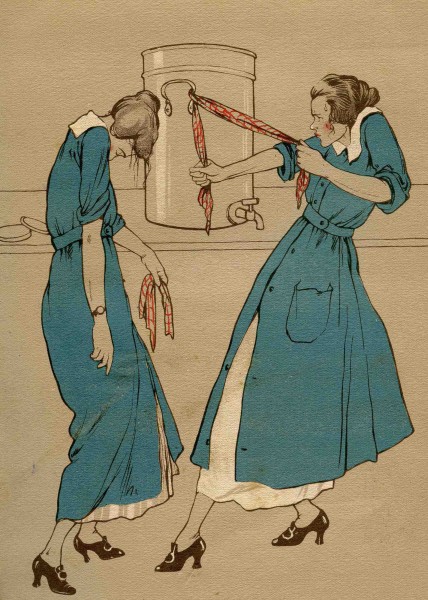
‘Urns’ is the title and the verse begins: ‘If you’re sick of a humdrum life,/ If you’re out for excitement (and burns),/ If you seek for the strafe and the strife,/ Have a go at the Urns.
20 January 2016

The verse is headed Hut Decoration and reads: ‘Haste! Throw a Flowing Garment on/ And Chelsea’s haunts invade./ Ring up the great Augustus John/ And summon here the Slade./ Some other Huts have pictures – yes/ But Ours must lead them all;/ So mix a really modern mess/ And slap it on the wall!’
